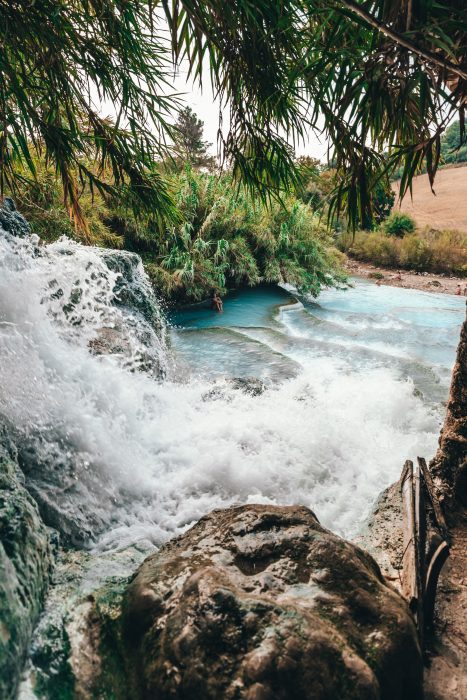Journey through Italian Hot Springs
‘’If you do your research on hot springs all over the world, they’re usually places of peace. People, even in warring nations and so forth, they’ll go and live in peace together around the hot springs, which were always considered medicinal. I firmly believe in water therapy.’’ Larry Hagman
People enjoy hot springs for various reasons. Thermal springs are great for relaxing, soaking and have benefits for health too. Many scientists worldwide are studying balneology – ‘’the study of the art and science of baths and bathing in natural mineral waters for health and wellness purposes. Balneology includes scientific research into the methods and applications of bathing, drinking, steaming and inhaling natural thermal and mineral waters for wellness, health and medical benefits, including their associated natural gases and peloids (organic muds).’’[i]
Throughout Europe, balneology and balneotherapy became a part of routine medical treatment. Balneotherapy originated in hot springs and has been practised since ancient times as a form of medicine in many cultures.
The benefits of soaking in hot springs include:
- Boost of blood circulation
- Reduce stress and promote sleep
- Relax of tense muscles
- Relieve pain and fatigue
- Heal skin problems and skin detox
So what is a hot spring?
‘’Hot spring, also called thermal spring, spring with water at temperatures substantially higher than the air temperature of the surrounding region. Most hot springs discharge groundwater that is heated by shallow intrusions of magma (molten rock) in volcanic areas. Some thermal springs, however, are not related to volcanic activity. In such cases, the water is heated by convective circulation: groundwater percolating downward reaches depths of a kilometre or more where the temperature of rocks is high because of the normal temperature gradient of the Earth’s crust—about 30 °C (54 °F) per kilometre in the first 10 km (6 miles).’’[ii]


TUSCAN HOT SPRING WONDERLAND
Our journey begins in Tuscany. This region is abundant in natural thermal springs that are known for their curative properties since the Roman time. Currently, the major hot springs are used by hotels and medical centres, but you can still find natural springs scattered in the countryside, free of charge and untamed.
Our first stop is at Equi Terme, a small village situated in Lunigiana hills among the Apuan Alps. This place gives you a real local vibe , as not many travellers know about it. For us it’s a peacful and secluded getaway nested in the mountains. This wild and unspoilt countryside has a diverse ecosystem. The Apuan Alps’ marble core is the origin of the healing waters that fuel the Equi baths. The baths are known for their beneficial and healing properties. People come here for the treatment of respiratory illnesses and skin problems. Except for the baths, you can visit the nearby archaeological park and one of many medieval castles in the area. If you feel for a bit of exercise head to Grotte di Equi, a complex of caves in the Apuan Alps Regional Park, acknowledged by UNESCO as a Geopark.
Chianciano Terme is another hidden gem of Tuscany. Located between Val d’Orcia and the Chiana Valley, this area enchants with a historical and spa centre. A place of comfort and relaxation that dates back to Etruscan and Roman times. Here The Etruscans built a temple at the source of the mineral-rich water that had healing powers. Over the years, the hot springs developed a reputation for curing liver problems. These days, many other treatments are also available in the area.
Let’s move to another location: Bagni di Petriolo located 20 minutes drive from Siena. These hot springs were popular with the Romans and later with the Medici family. The pools are located by ruined walls that are dating 404 AD. They are typically 43 degrees Celsius, making them reasonably warm whenever you may visit. Sulphide in the water makes it rich in salts, which is therapeutic and good for the skin. The landscape surrounding these springs is perfect for organising a day excursion with hikes and walks and visiting the Nature Reserve of Basso Merse. Check out the attractions such as the legendary Abbey of San Galgano and picturesque historic towns such as Monticiano, Murlo, and Civitella Paganico.
Also, the hot springs near the town of Bagni San Filippo are spectacular. They are quite famous and easy to get there. They are situated in the municipality of Castiglione d’Orcia, a short distance from Mount Amiata. San Filippo took its name from the Florentine hermit who sheltered here in the 13th century. One of the stunning features is Fosso Bianco – a series of calcareous rock formations hanging over the water in a set of stalactites. Unwind in this natural wonderland where you can admire the Balena Bianca (the white whale), a thermal waterfall and famous limestone monument that flows from the surrounding area. If you feel for more exploration, you cannot miss the fortress of Radicofani, the Abbey of Sant’Antimo and the towns of Montalcino, Pienza and San Quirico d’Orcia.
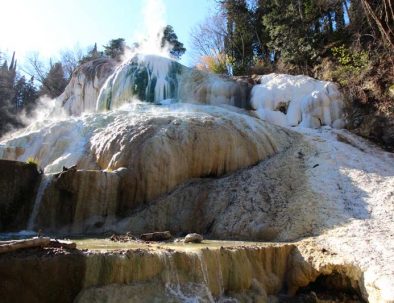
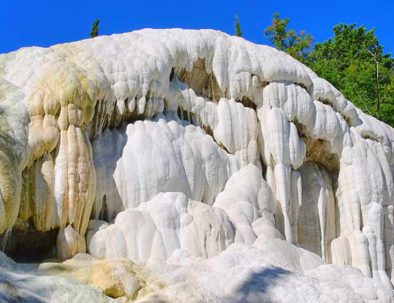
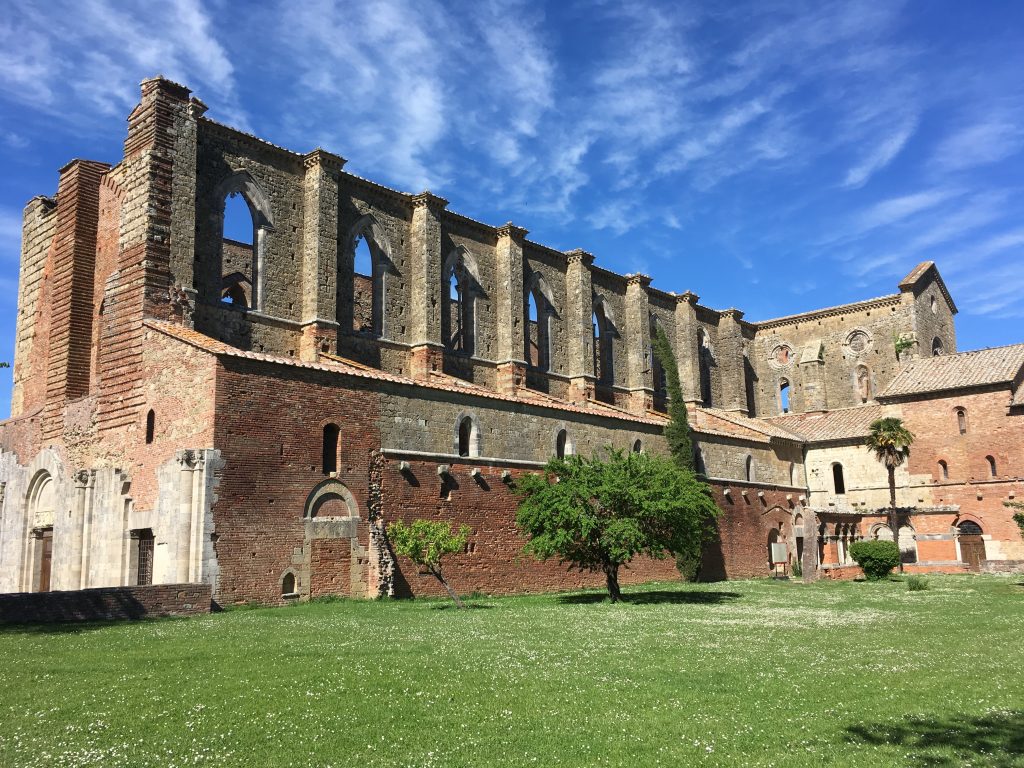
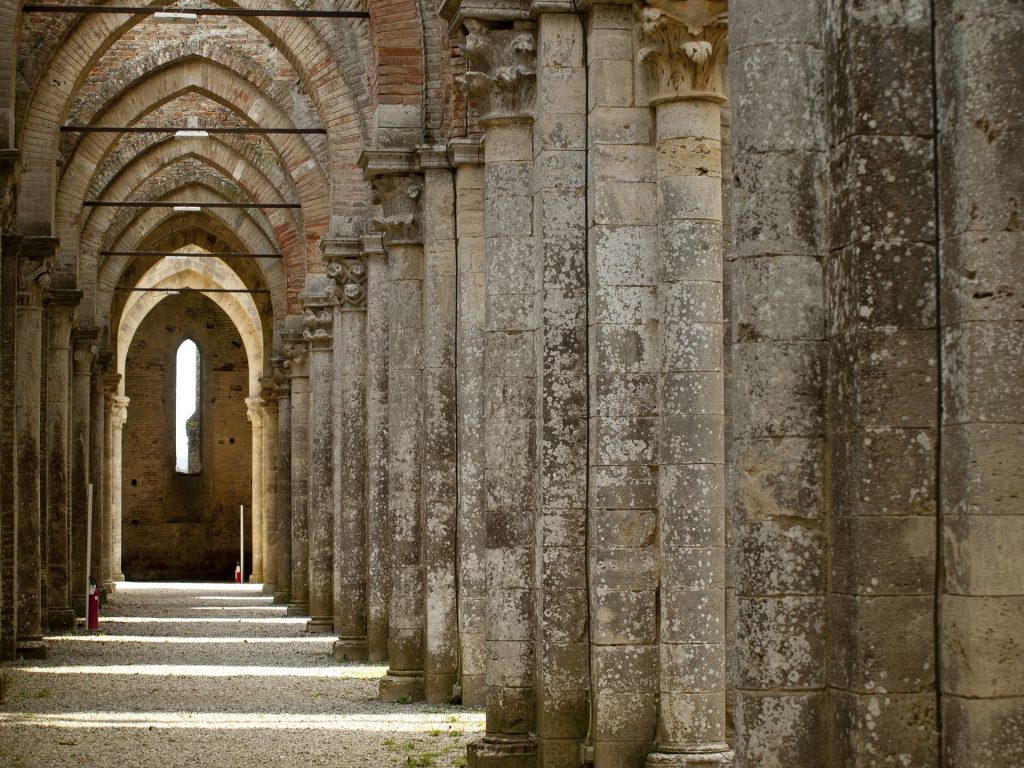
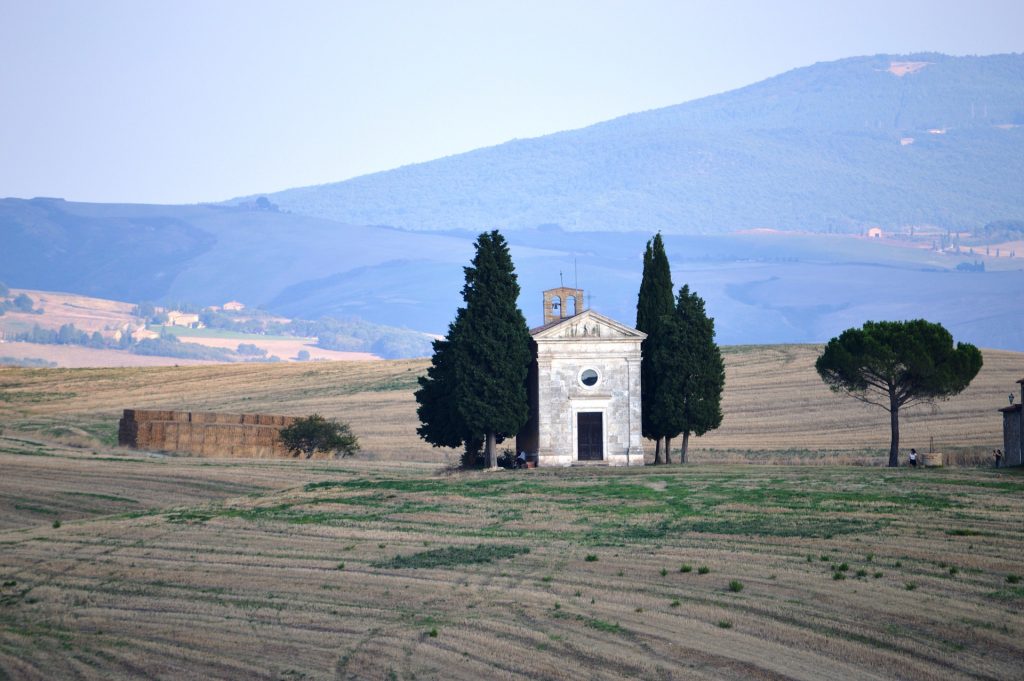
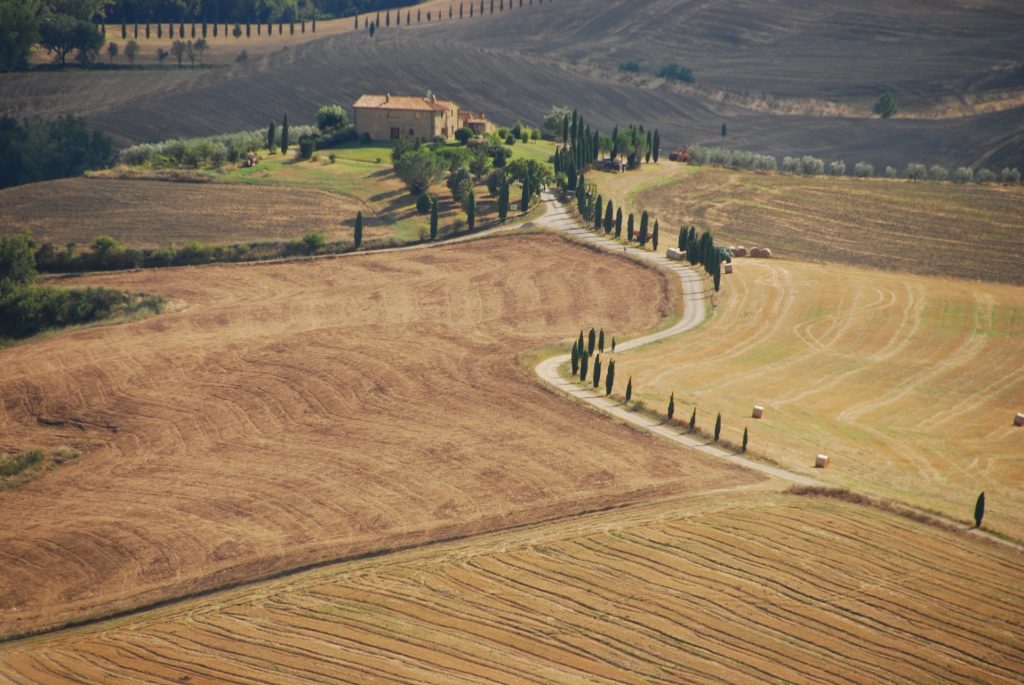
Another free hot springs can be found in San Casciano, located in the province of Siena. At the foot of Mount Cetona, you can soak in original pools of the Roman age made of stones. The water supplying the thermal baths of San Casciano dei Bagni gush from 42 springs and is rich in calcium, fluorine, and magnesium. The temperatures stays at 40°C. After the bath, make sure to visit the town and some of its churches: the Insigne Collegiata di San Leonardo, the Church of Sant’Antonio, Christian church of Santa Maria della Colonna and finally, the Church of San Michele Arcangelo. In the historic centre, you’ll encounter some great buildings such as the 16th-century Palazzo dell’ Arcipretura, the Town Hall, and the Celle Tower.
One of the best hot springs in Tuscany is Bango Vignoni. In the centre of the main square, you will see the pool, from the bottom of which bubble up many hot springs. You cannot swim in the main square pool so instead, head to the Parco Dei Mulini to relax there. The Park can be visited all year round (water typically ranges around 38 degrees Celsius ) and it is marked by paths that lead to 4 mills, some dug into the rock and others partly underground. The mills located here remained in operation from the 12th century until the 1950s, giving Bagno Vignoni and the entire area a great advantage: while in summer the other mills did not work due to the lack of water, these were always active.
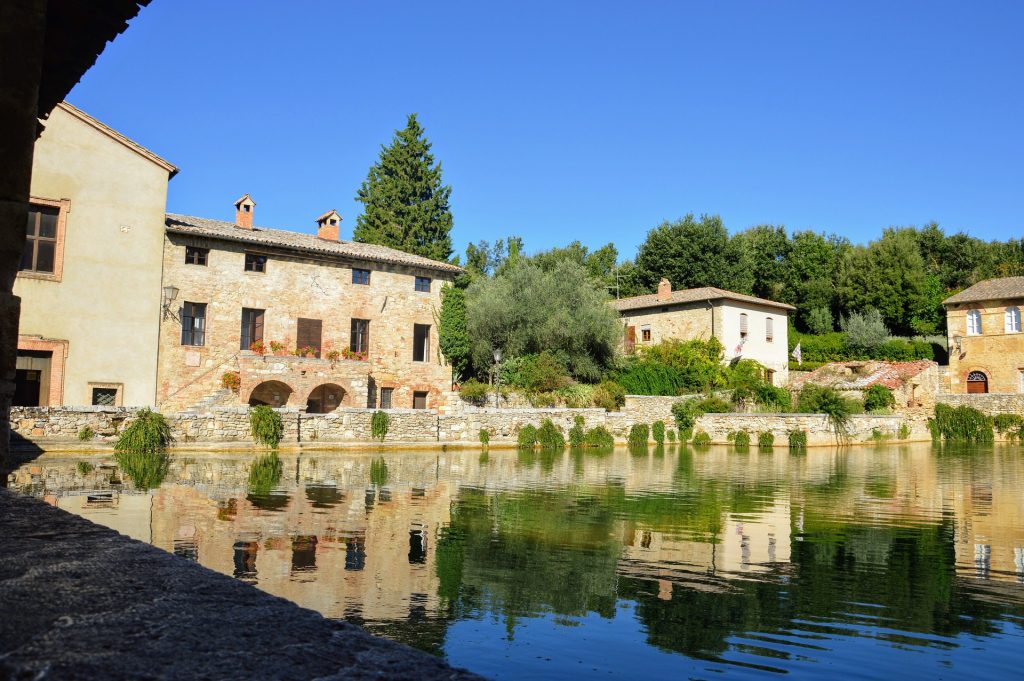
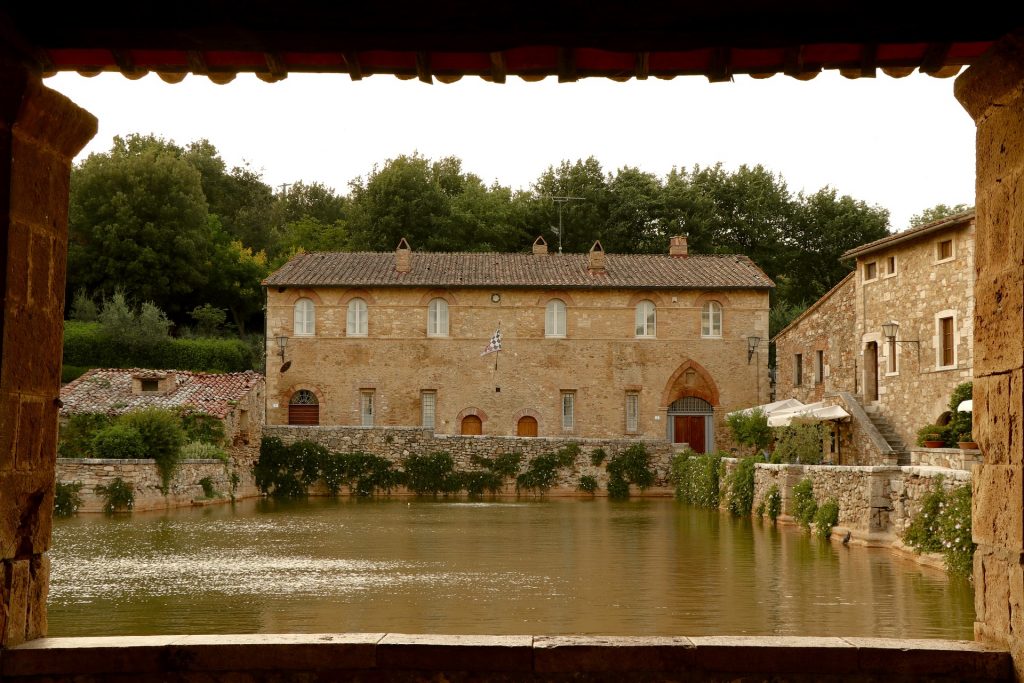
Finally the best-known hot spring in this region is at Saturnia in the Maremma area, which is full of wooded hills, valleys, olive groves, vines and cypresses. These baths were around for centuries, as is proved by Etruscan remains found in the area. The central falls are easy to find: not far from the town’s leading spa. You will see a series of rock pools with water about 37C. The water spring from a volcanic crater and then runs for 500 metres along a natural creek. The flow of water occurs a natural waterfall (around an old mill) and creates several natural rock baths. These are the Cascate del Mulino. The water, rich in sulphur is believed to have health benefits. If you need a break from hot springs, the nearby river Albegna is a perfect place to cool down. For some nature, you can escape to Monte Argentario and the Mounts of Uccellina park that are located closeby. If you want to visit some charming towns, head to Pitigliano, Sorano or Sovana. At the same time, Santo Stefano’s port connects to the Giannutri and Giglio islands by a ferry. Porto Ercole and Ansedonia are also easily accessible from Saturnia.
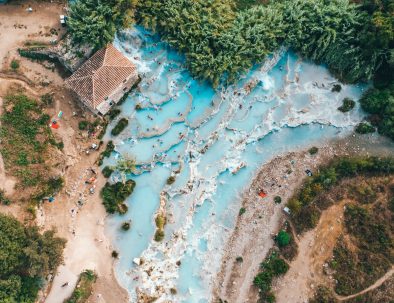
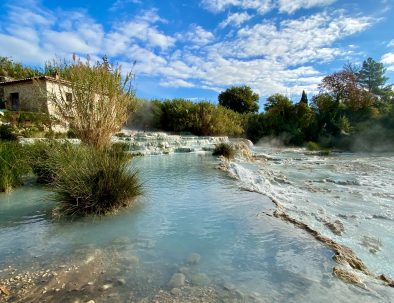
LAZIO – UNREVEALED HOT SPRING PARADISE
Not many know that you can also find hot springs in other regions of Italy. In Viterbo (Lazio region), you can combine wellness and relaxation due to various hot springs scattered around the beautiful countryside. In most cases, these are the natural springs, so there are no entrance fees and no services. But that’s not all; you can also visit thermal pools within spas and resorts like Terme dei Papi and Hotel Salus Terme. There you can be treated to a luxurious service and indulge in an elegant and relaxing atmosphere in the natural Grotto, or a Turkish bath.
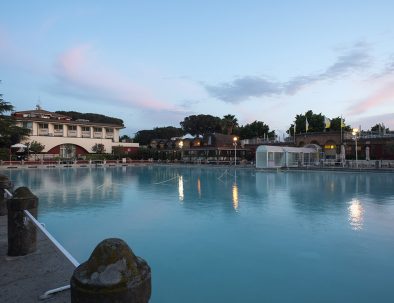
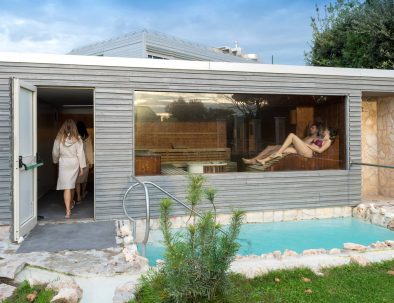
But let’s get back to thermal springs. Two and a half kilometers from Viterbo’s centre you can find Piscine Carletti. The free hyperthermal area originates from a spring with characteristics similar to those of the Bulicame. It is located near the intersection between Strada Terme and Strada Tuscanese. The thermal water has an outlet temperature of about 58° C and feeds several pools that are the destination of many Viterbo residents and tourists. The area has a large free unattended car park close to the spring but does not have other services. The site is surrounded by greenery where you can lie down for relaxation or sunbath if you want. At the Carletti pools, it is enjoyable to bathe even in winter, given the high temperature.
If you are a fan of hot temperatures, Bulicame springs are heaven for you. The Romans built huge complexes around these springs. The word “bullicame” comes from the verb “bullicare”, to boil, and it really does as the spring water reaches an exceptional 58° C. In the area that includes the free baths, there is also located the famous crater in which the water and thermal mud come out to the surface. The springs include two swimming pools: the round one in which the boiling water comes from the thermal crater and the long and rectangular one in which the water flows at a relatively much lower temperature. You can quickly get addicted; after hours of soaking, your skin gets smooth and soft, and your mind eases. The gushing sulfurous water is known to be therapeutic. It is said that it works particularly good for the skin, the respiratory system and aching bones. Bullicame is famous for having been mentioned by Dante Alighieri in the Divine Comedy. In particular, the poet refers to the boiling thermal spring in Canto XIV of Hell, in which he compares the sulphurous steam released by its waters to the gloomy air of hell.
Now let’s move on to Bagnaccio,- hot springs that are popular since medieval times. This thermal area is immersed in a large park and includes both hyperthermal and hypothermal springs. At Bagnaccio, you will find two spa areas: free baths and space accessible for a fee. Here you can admire Tuscia’s nature, in a nearby botanical garden and a conservation area for native species of the Viterbo area (set up in collaboration with the University of Tuscia). The waters of the Bagnaccio baths, known in Roman times as “Aquae Passeris”, are earthy, sulphurous and hyperthermal. The temperature at the source is 63° C. These thermal waters have important beneficial properties on the skin, joints and respiratory systems.
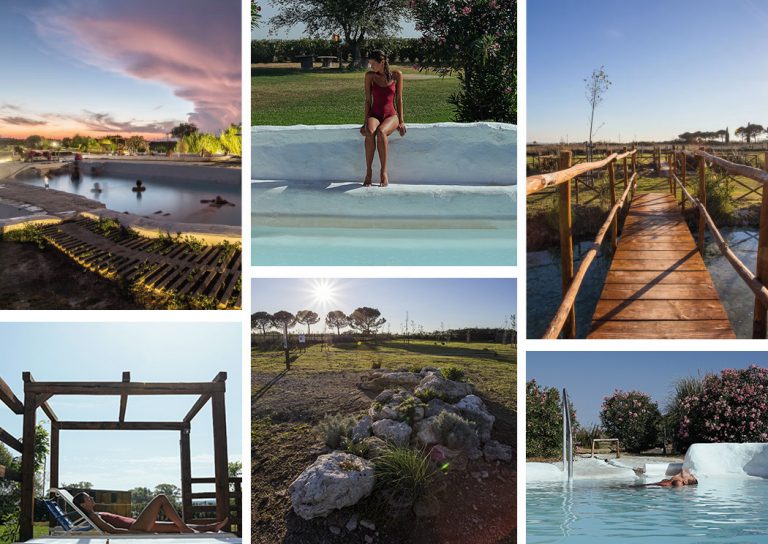
CAMPANIA – HIDDEN GEM OF THERMAL SPRINGS
If you feel for an island hideaway and spa ambience same time, make sure to visit the island of Ischia – one of the world’s oldest spa resorts. The island was already popular with Romans and Homer mentioned it in the Iliad. Here you will find several spots where thermal springs bubble up naturally from underground, and you can pop in to relax and soak in the warm water.
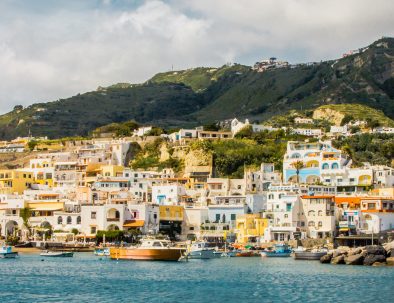
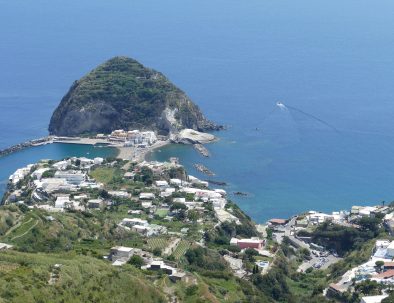
Let’s start at Sorgento – the most famous natural hot springs in Ischia and one of the island’s biggest attractions. You will find them in the Bay of Sorgeto (filled with rocks, pebbles, and pools of hot water), near the Bay of Sant’Angelo. Discover a variety of pools, each with slightly different water temperatures between 30 and 37 degrees. To arrive there, you need to do some climbing down the steps towards a small beach. Spend the day here to enjoy this natural jacuzzi that soothes and massages the body. You can also sunbathe in the natural cove and simply witness nature at its best. Sorgeto is an entirely natural phenomenon; the experience is free of charge and open all year round.
Another interesting spot to visit is “Le Fumarole”, a small beach on the southern coast that will take your breath away. Here the volcanic activity of the island is evident. Hot steam is released from the sand (it can be boiling in some places – temperatures reach 100° C). The burning area emanating from underneath has been used since ancient times to heal the body. That’s why you will see many visitors who bury themselves in the warm sand, as it is known to be naturally therapeutic. This activity is known as sandblasting – it means completely covering yourself with sand and leaving only your head out. Sandblasting is particularly suitable for those suffering from rheumatic pain. Another interesting fact is that some people, especially during summer evenings, go to the fumaroles to cook food wrapped in aluminium foil. In this steam, you can cook all type of food, including chicken, potatoes, hard-boiled eggs (covered in foil and sanded ), and the result is truly unique. If you are not into cooking your food this way, you can find several restaurants and cafès near the beach for a snack or meal.
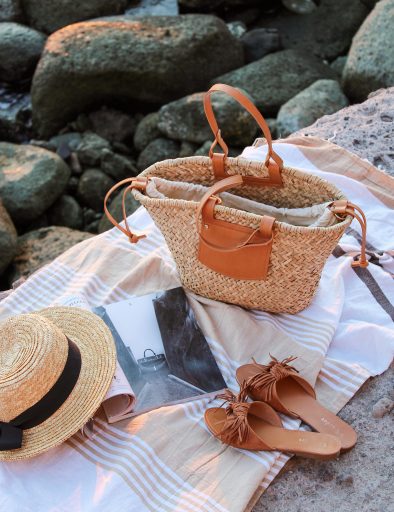

Let’s move to the next stop – Citara – a charming beach offering free hot springs. According to an old legend, its name comes from Venus Citarea, the Godness of Beauty, born here from the sea’s white foam. Here you will find the famous Poseidon Gardens, one of the largest and most famous thermal parks. Citara is renowned for its clear deep waters, fine white sand, and one of the sunniest beaches on the island. Thanks to its western position, you can come and enjoy some breathtaking sunsets. The natural seawater mixes with the thermal water – hot springs bubble up right at the water’s edge and the fumarole release warm vapours on the beach.
Suppose you feel for a full day of relaxation head to Nitrodi Natural Springs dating back to Roman times. This place is renowned for its peace, tranquillity and sense of wellbeing. Here thermal springs meet the aromatherapy, marvelous gardens and panoramic views so that you can make a whole day of indulgence. The water is qualified as mineral (bicarbonate – sulphate and alkaline – earthy) and hypothermal. Among the main components are sodium, calcium, chlorine, sulphur and carbon. Visitors suffering from varicose veins, burns, and skin conditions, such as eczema, acne, psoriasis and neurodermatitis, are said to benefit from Nitrodi’s water. Experience the Nitrodi park, enjoying the shade of the trees and sea breeze whilst lying comfortably on the sun lounger. You can also participate in organised activities and unique natural wellness experience with yoga, music therapy, meditation and mandala therapy teachers.
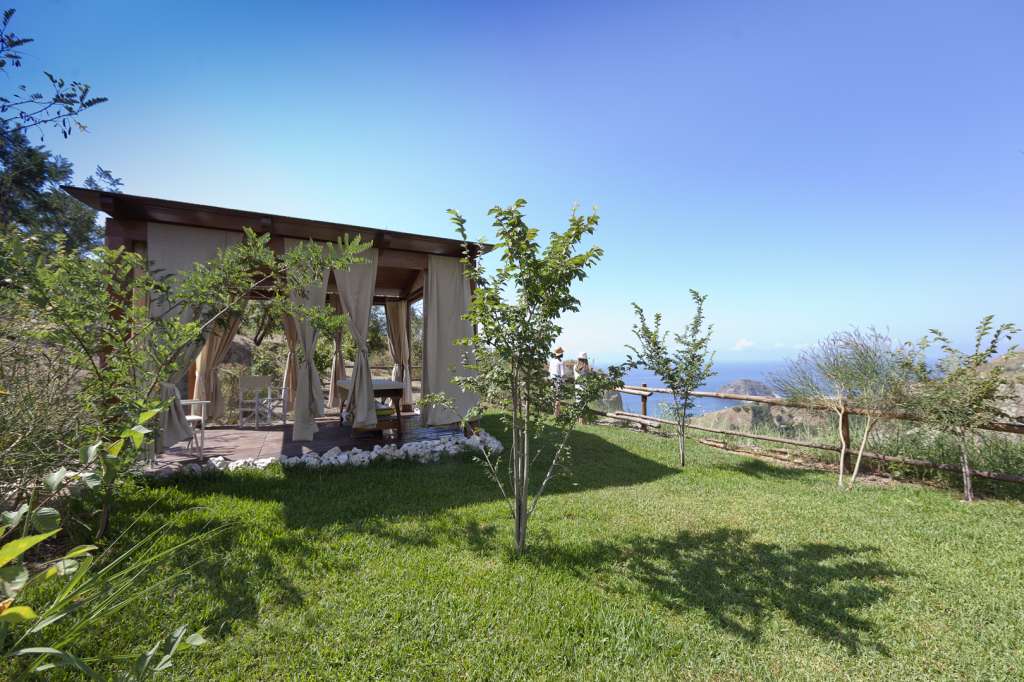
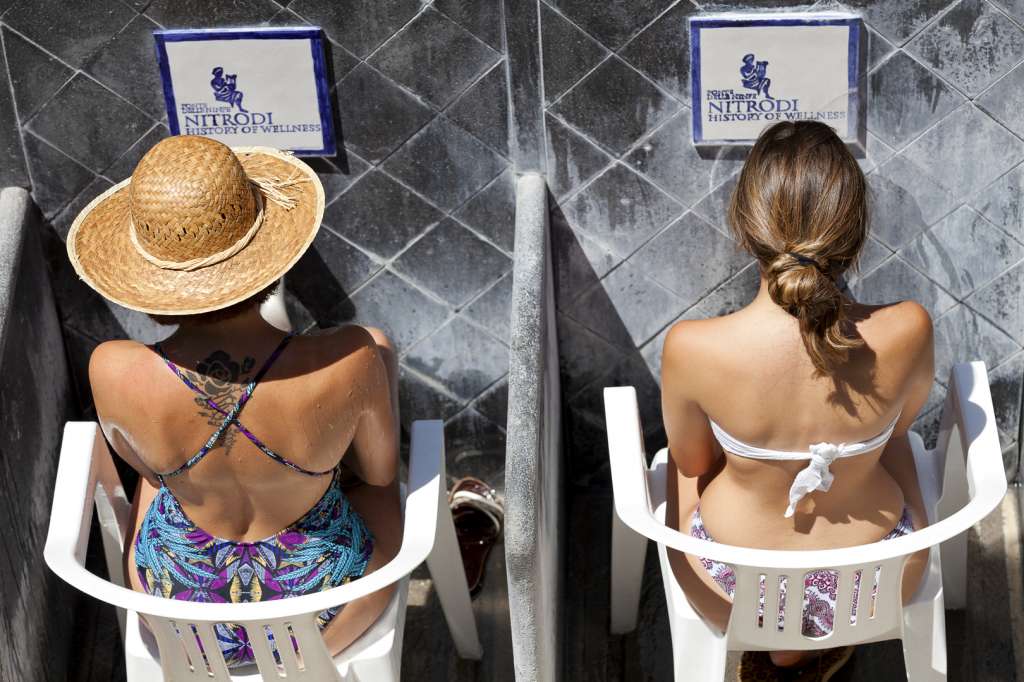
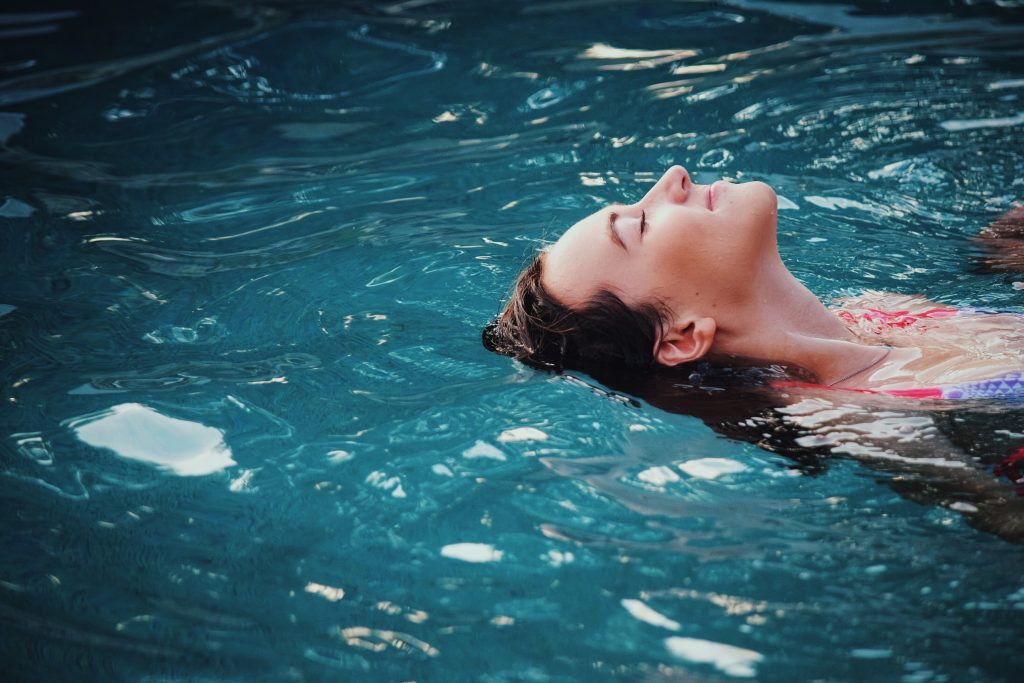
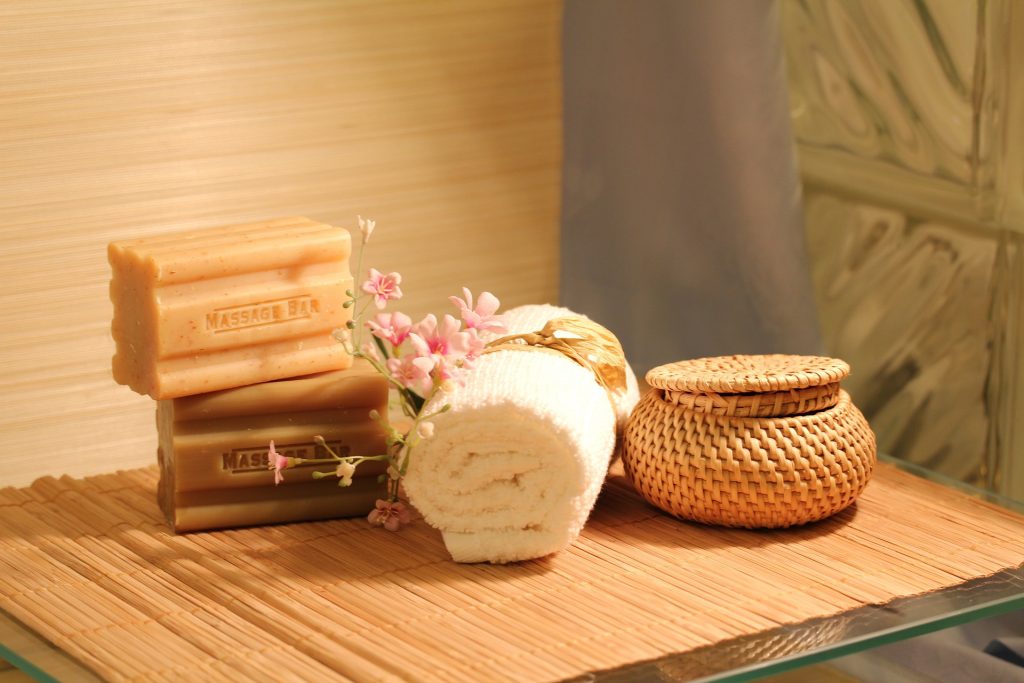
While you are in Barano d’Ischia (famous for its vineyards) make sure to stop at Cavascura Natural Springs to experience the Romans’ ancient times. Head to the golden sands of Moranti Beach, where you can find the caves of Cavascura. The caves act as a natural sauna created by the steam which escapes from the thermal depths below. You can bathe in the variety of caves and showers and indulge into sunbathing on the sun-deck. Also in the complex you will find natural hot showers, a natural sauna and even a wellness centre where you can have a massage or various cosmetic treatments.
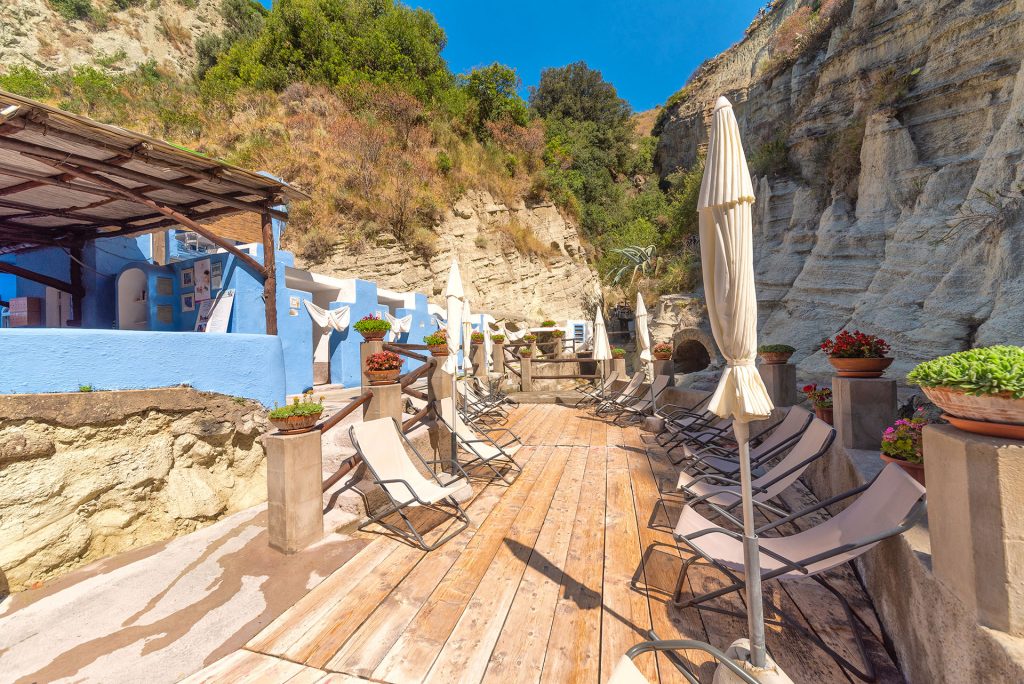
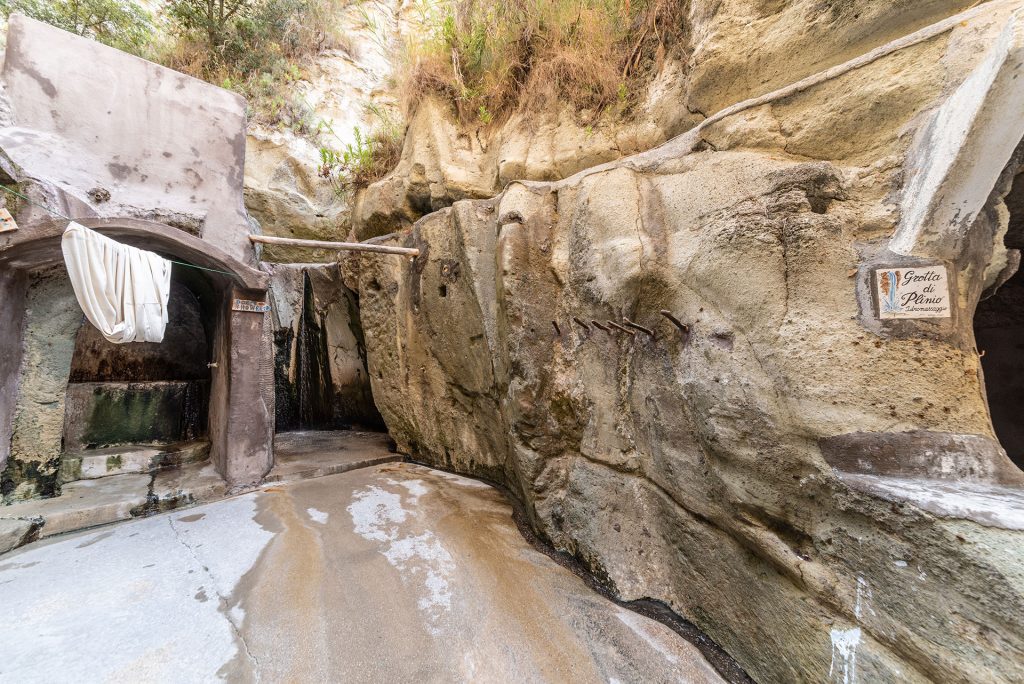
Ischia is a truly splendid location for a wellness break, but it can offer much more. The island is ful of history, culture and outstanding gardens and little towns. You can combine your stay with a quick visit to Procida island or a short stay in Naples.
Our wellness journey came to an end. We hope that we managed to inspire you to visit Italy and follow the route of thermal springs. You can combine the visit to the springs with nature escape, some outdoor activities, visiting local towns and learning about the regional cuisine. If you are interested in more details, drop us an email or a comment, and we are happy to chat with you. Until next time!
[1] https://balneology.org/introduction-to-balneology/
[1] https://www.britannica.com

